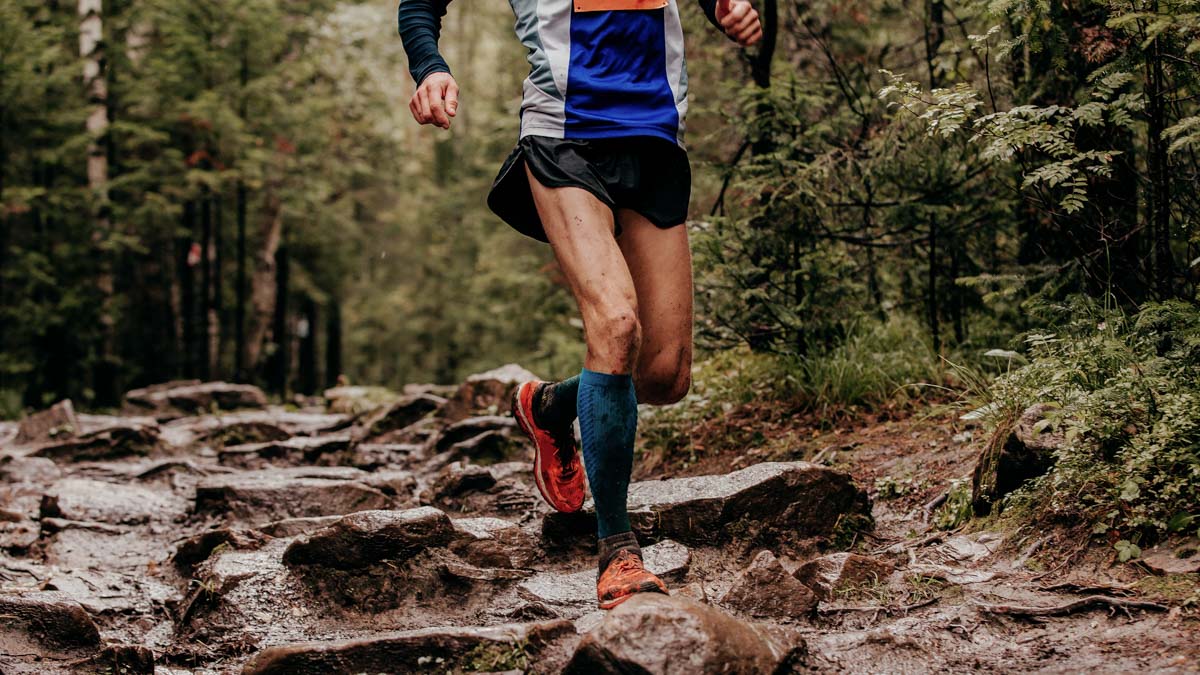Say your athlete comes to you with knee pain, specifically in the front of their knee, a symptom that fits seamlessly with the injury commonly described as “runner’s knee.” How do you adjust their upcoming training? Research has shown this is the most common injury among runners at an incidence of 20%. More than likely this injury didn’t occur from slipping off the edge of the road, but rather from constant stress, friction, and compression without proper recovery or strengthening of stabilizing muscle groups. Unfortunately, when the athlete presents with a tendon injury, it’s typically not a short term problem with a quick fix.
Tendons are the structures that connect your muscles to bone. When we break down the term tendonitis we have ‘tendon’ and then suffix “-itis,” which means inflammation. Well, what if I told you tendons aren’t capable of inflammation? The more accurate term for this injury is “tendinosis” or the chronic degeneration of tendon tissue.
Tendinosis in the knee is frequently associated with excessive movement in the pelvis, most commonly due to a drop to one side along with inward twisting of the knee. It also arises when the kinematics of the athlete’s running form are impaired due to IT band syndrome, previous ACL tears, or shin-splits—all of which can create excess friction in the knee.
A tendinosis diagnosis can feel overwhelming to a coach, especially since all athletes and all injuries are different and should be treated as such. Some tissues need complete rest. Some tissues need modified activity. While still, some tissues need a pair of crutches and a referral to the physician or physical therapist. In order to return tendons to their functional state, there are a few simple rules that can make a runner’s knee diagnoses feel more manageable.
1. Reduce the Load
First, we must determine the appropriate load reduction for the athlete. Decreasing the duration and intensity at which the athlete is training will promote healing in the tendon. If the injury is severe enough, the athlete may need complete rest.
2. Add Deep Tissue Work
Next, the athlete may need to consult a physical therapist for manual therapy and advice on how to realign the tissue. When a tendon is injured, the fibers that make up the structure are no longer aligned in parallel. When this happens, the tendon is unable to absorb the applied training load. The athlete may require professional help to restore the optimal microanatomy of the tendon.
3. Incorporate Strength
After addressing non-uniform tissue alignment, athletes should use eccentric strengthening to further align fibers back to their strongest, parallel state. Eccentric strength training can be described as loading a tissue while in its lengthened state. If you’re not familiar with this kind of training, let’s try this: grab a dumbbell in which you can perform a biceps curl comfortably. Then, increase the weight and use both hands to curl the dumbbell. Then, keeping the weight in one hand, slowly lower it so your elbow is straight. Notice anything? You are actually stronger when you are loading the muscle and tendon as it lengthens (while you straighten your elbow).
This type of movement elicits stress through the muscle and tendon causing the body to rebuild fibers in an optimal structural design, thus improving tendon strength. These kinds of exercises can be done with high repetitions (ie: 3 sets of 20) up to 6 days per week.
4. Correct the Stride
Quad-dominant running form is the most frequent source of pain in the front of the knee, as it commonly causes athletes to over-stride. In this case, stability exercises for the core, foot, and hip can help teach the foot to land closer to the body. Our goal is to reduce quad dominance in the athlete’s running form and teach them to produce force and power from the glutes.
With a static hip flexor stretch, we can also regain hip flexor mobility to allow them to get their hip behind them while running. Run drills and incorporating verbal cues such as “push, don’t pull” will help to shift muscle memory from the quadriceps and hip flexors back to the glutes. This will give the athlete short-term form-focused goals throughout the healing process.
The next time you have an athlete come to you with tendinosis, remember simply reducing training volume, adding rest, and unspecific cross-training won’t fix the biomechanical and structural limitations of the individual. Instead, follow the above rules to guide your decision making to foster the best environment to return the athlete to sport pain-free.


